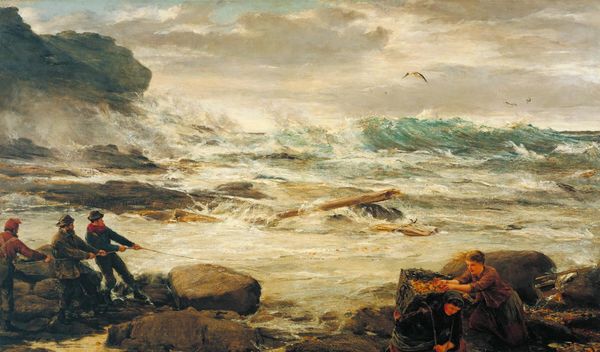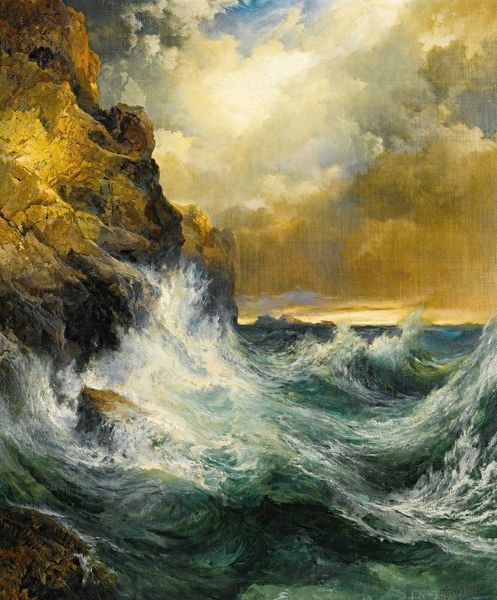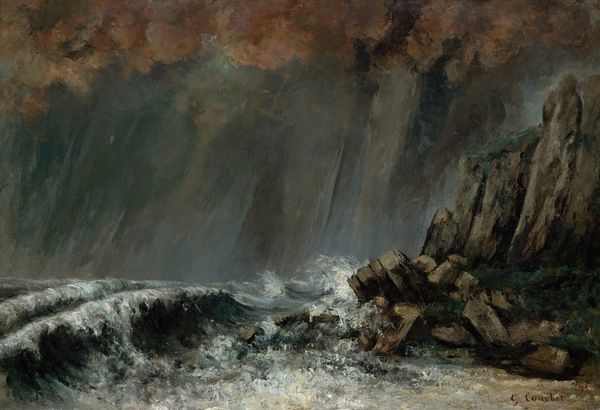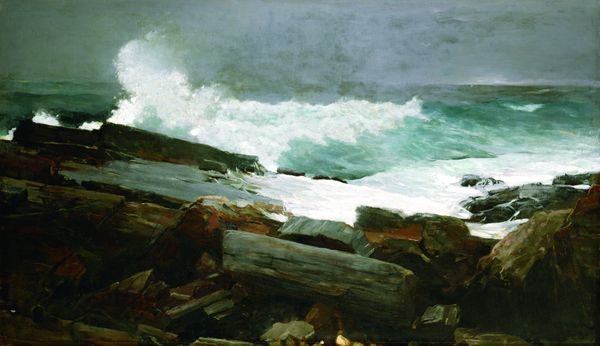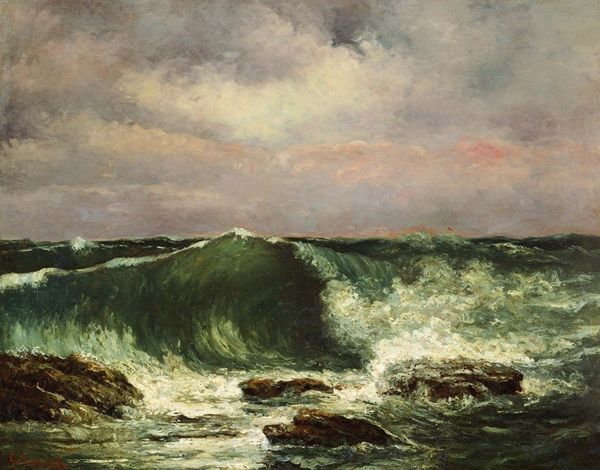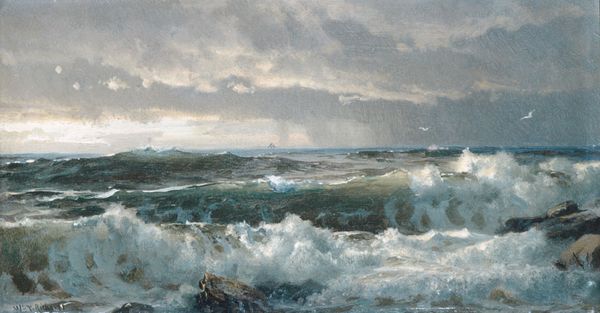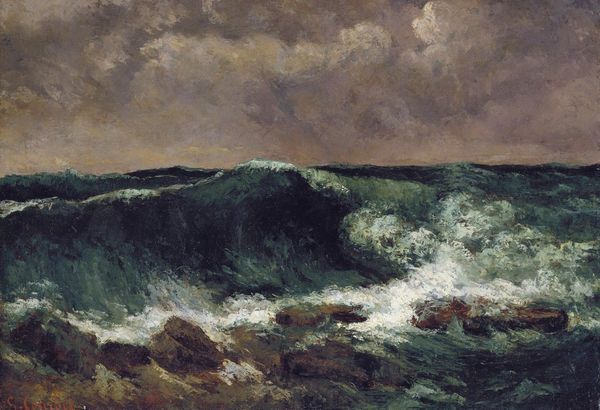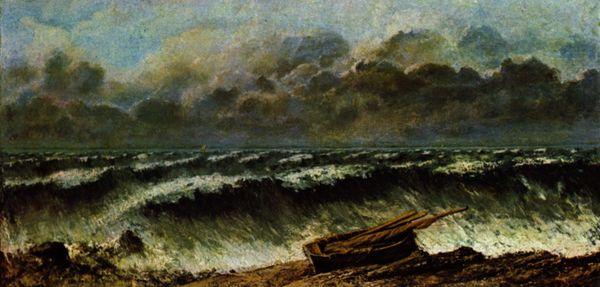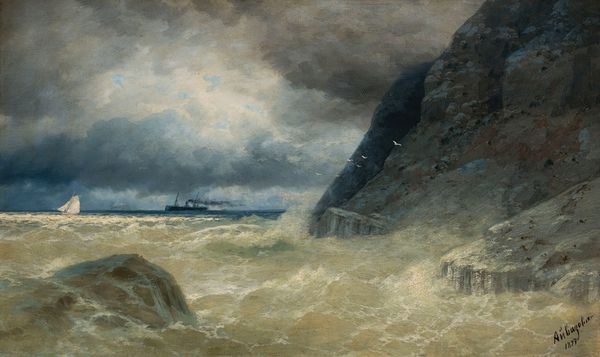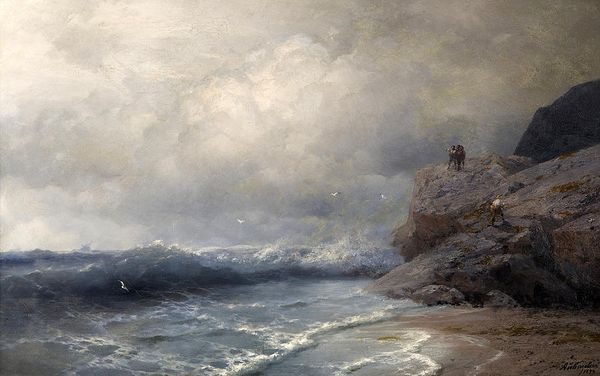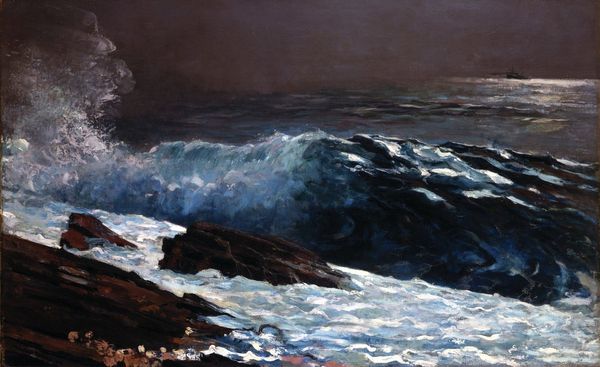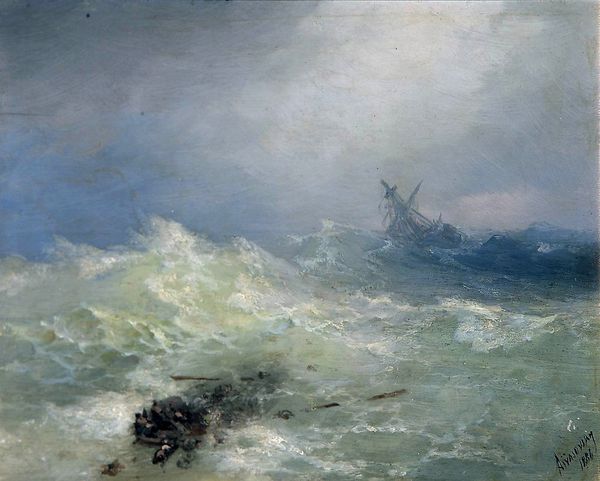
painting, oil-paint
#
painting
#
oil-paint
#
landscape
#
impressionist landscape
#
oil painting
#
romanticism
#
hudson-river-school
#
watercolor
#
realism
Copyright: Public domain
Curator: Well, that’s arresting. What’s your initial response? Editor: Turbulence. The churning water dominates the scene. There’s a sense of raw power. It’s quite compelling, like an invitation to confront something immense and possibly untamable. Curator: I find it fascinating how Thomas Moran, associated with the Hudson River School, a movement focused on serene landscapes, decided to capture “The Rapids Above Niagara” on canvas, likely in the later part of his career given stylistic evidence. Oil on canvas, an epic subject matter—it's a stark departure from those more tranquil, pastoral scenes. Editor: The power is definitely communicated by the high horizon line—it creates an intimate and immersive feeling for the viewer. And what’s with this root system and stone at the bottom? Do you know what symbols are at work? Curator: Placing emphasis on landscape and raw emotion of Niagara reflects a shift toward focusing on nation's natural wonders in a country that found itself embroiled in intense conflict regarding slavery and Civil War tensions, just before Moran turned to Niagara. As for symbolism, I am curious if the upturned tree could mean the impermanence and destruction resulting from this landscape. Moran himself would certainly have been familiar with similar allegorical symbolism employed by landscape artists like Thomas Cole. Editor: A motif for death, for impermanence? I think so. And the gigantic stone looks lonely sitting next to it; like a reminder of enduring but mute observation. Moran’s placement suggests a reflection on both mortality and eternity, juxtaposed in the face of nature's might. Is that accurate, from your understanding? Curator: Absolutely. It highlights nature's ability to be both a source of comfort and of unsettling change. Its appeal to the audiences that could afford to collect and own landscape paintings spoke to very specific aspirations that aligned with the construction of American national identity during that tumultuous era. Editor: And I see he's included the reflection of this turbulent world. If we linger, will it consume us too? Curator: I would argue it invites contemplation, an engagement with our own place within that history. Editor: A potent combination. Curator: It’s this tension—this almost terrifying beauty—that makes Moran's Niagara so enduring.
Comments
No comments
Be the first to comment and join the conversation on the ultimate creative platform.
